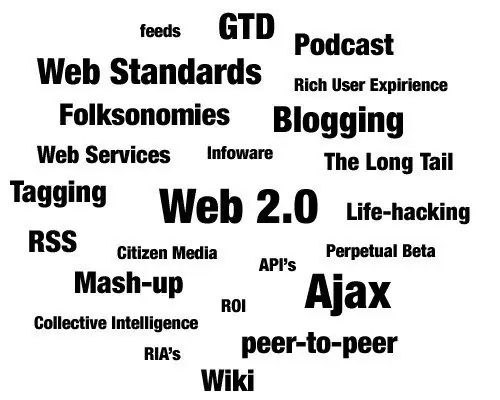- Author Lauren Nevill [email protected].
- Public 2023-12-16 18:48.
- Last modified 2025-01-23 15:15.
Tags or tags are keywords that reflect the main topic of an article or message posted on the Internet. Why did they arise and should they be used?

The concept of a tag cloud emerged about 10 years ago. It first appeared in the WordPress engine, and then became an independent element of the design of web pages, regardless of the engine on which they are organized.
The tag cloud provides a visual representation of which categories of articles are posted on a given Internet resource. The more often a keyword is mentioned, the larger the font size it appears. This technology has become widespread in blogs and on narrow-topic sites. The keyword cloud can be created manually or using special generator programs.
The tag cloud reflects the main theme of the site, acts as the semantic core of your site and is used by search engines for indexing. In addition, it can be used by users as an index: just click on one of the categories to display all articles and messages related to this topic. For the user, the tag cloud is a convenient site navigation tool.
For SEO-promoting a page or resource, you can pick up a tag cloud containing high-frequency user requests. The only disadvantage of this technology is that it is impossible to create a hierarchical structure of tags in the keyword cloud: nesting levels are not supported.
The tag cloud can be implemented as html hyperlinks or using flash technologies. Many CMS (for example, WordPress and Joomla) provide additional plugins to implement this functionality. You can set the required number of displayed tags, experiment with font sizes and colors. The cloud can be static or dynamic. The variety of design options will make this element a harmonious addition to any site.






